
SEPTEMBER


















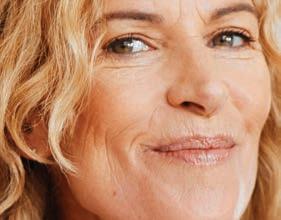




















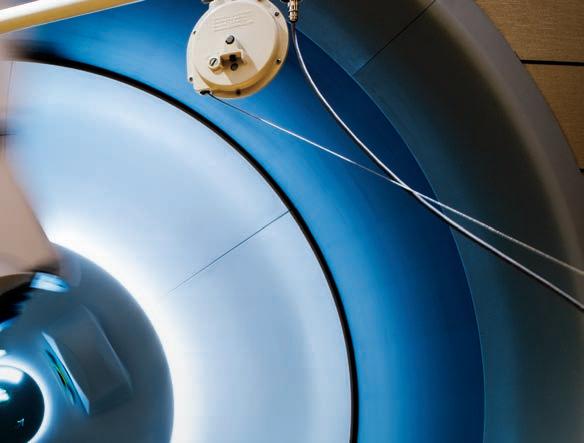

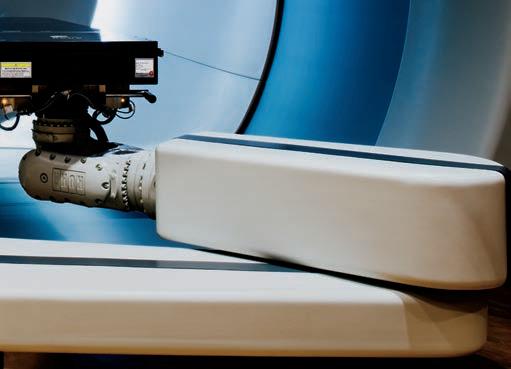
















“Among my patients, women are more likely to take care of their friends and family before they take care of themselves.”
DR. KEN JOHNSON






HER
Ask a woman about her schedule for the weeks and months ahead, and you’ll quickly realize the saying, “There
are not enough hours in the day” seems accurate.
BY JENNIFER SANDER HAYES
schedule is likely overbooked with family activities, kids’ doctor and dental appointments, and school and social commitments. There’s a lot to do—and remember—for herself and those she loves. A packed schedule often forces a woman to move her priorities and needs to the bottom of the list. While this may seem like the only way to get everything done, a woman’s own medical appointments and paying attention to her health can’t be overlooked. Missing just one annual exam or screen could place her health at risk.
If being busy isn’t the excuse a woman gives for skipping this year’s well-woman exam, the fear of having her concerns or questions dismissed by a physician is often a secondary reason. Women often report leaving a doctor’s appointment feeling rushed and, as a result, also feel that their concerns were minimized by their doctor. This is why it is critical for women to f ind a physician who will listen to them, learn about their family history of disease, and guide them through the tests and screens they need at different ages throughout their life. Taking a preventive approach to wellness will ultimately save women time in their busy schedules and help them feel better and more energetic as they tackle their seemingly never-ending to-do list.
From Alzheimer’s prevention and functional medicine innovations to early cancer detection and advances in eye surgery, women have so many options when it comes to being proactive about their health at every stage of life.



most people think of women’s health, breast cancer, hormone replacement therapy, and gynecologic cancers often come to mind. Dr. Mohammed Ahmed, neuropsychiatrist and medical director of Kaizen Brain Center, has made it his mission to place women’s brain health high on this list.
“Women’s brain health has been ignored for quite some time. Twothirds of patients with Alzheimer’s disease are women,” Dr. Ahmed says. “Attention Deficit Disorder is another common condition in women. Because ADHD is more common in men due to hyperactivity, women often do not get a proper diagnosis. Somehow, women tend to push through symptoms. However, as they age and responsibilities take over, the ADD symptoms control their lives.”



“Women in the United States make approximately 80% of the healthcare decisions for their families, yet often are often too busy to properly care for themselves.”
SYLVIA HARGRAVE, M.D.

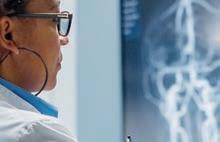


Dif f iculties with focus and concentration, brain fog, emotional regulation, and difficulties with planning and organization are often the top concerns women report, primarily because these are all skill sets they have typically mastered most of their lives.
“When a woman begins struggling with her executive function, it not only affects them, but also her family, children, and work,” Dr. Ahmed says.
Based in California, the Kaizen Brain Center is a collaborative, interdisciplinary, neuroscience-based,




data-driven brain center focused on positively impacting patients’ lives through an innovative approach to improving brain health. Kaizen Brain Center was established to help patients with traumatic brain injury and concussion who weren’t receiving proper medical care and were at risk of developing progressive neurological conditions, such as Alzheimer’s disease, post-traumatic stress disorder, chronic traumatic encephalopathy (CTE), or Parkinson’s disease. Through the years, the center has grown to treat more





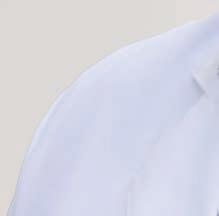
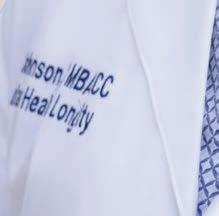


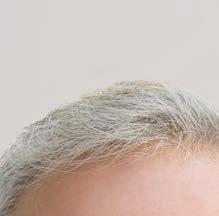

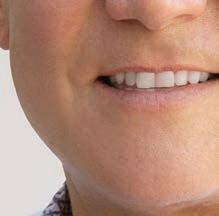






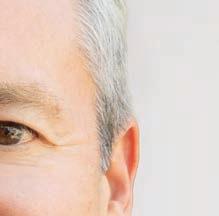
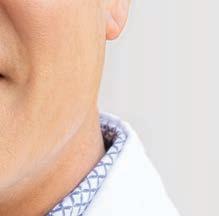


























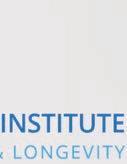



brain-related neurological and psychological conditions, including ADHD, and women from across the U.S. are taking note.
“We established this center because we realize that women’s brain health is not adequately addressed,” Dr. Ahmed says. “When a woman is diagnosed with Alzheimer’s disease at, say, age 65, the molecule switch for that disease likely turned on 20 to 25 years earlier. She may be oblivious to what is happening in her brain, and once the symptoms set in, it’s too late. The house is burned beyond repair. That’s why we failed in our clinical trials, as we were enrolling patients after they had symptoms. Now, we can screen patients much earlier, before they have symptoms, and predict who will likely get the disease. With a simple blood test, we can begin early screening for Alzheimer’s. This is very important as we now have two FDA-approved drugs that can slow down the progression of the disease.”
The Kaizen Brain Center also addresses women’s mental health with SAINT (Stanford Accelerated Intelligent Neuromodulation Treatment), which delivers an FDA-cleared, MRI-guided, theta-burst stimulation for rapid treatment of major depressive disorder. This treatment lasts f ive days; people can see relief as early as day three. SAINT embodies a new model in mental healthcare for those suffering from depression. Its scienti f ic discipline, simplicity, and effectiveness make it a breakthrough intervention for people struggling with depression. Kaizen Brain Center is one of the four sites nationally that offer this groundbreaking treatment.
“There is a high prevalence of depression in women, which is undiagnosed or undertreated,”Dr. Ahmed says. “Medication can be tricky because the benefits come with side effects, such as weight gain leading to metabolic issues. This therapy is well tolerated with little or no side effects. The efficacy of this treatment is nearly 80 %. Many patients fly from Dallas on the weekend, get treatment from Monday to Friday, and return home. It has been a game-changer for so many women suffering from depression.”

































Presbyopia is the gradual loss of your eyes’ ability to focus on nearby objects. It’s a natural, often annoying, part of aging. Even if you have enjoyed perfect vision throughout your life, once you reach your 40’s, you may gradually find that it becomes difficult to read a restaurant’s menu in dim lighting. Or you may move your cell phone further away from your face to read a text. As we age, changes in vision are common and can signal that it’s time for an eye exam.
Dr. Sylvia Hargrave, chief of ophthalmology for Methodist Dallas Medical Center and director of the Hargrave Eye Center says, “Women live longer than men and, as such, have more vision related issues and eye diseases. Their hormones, especially during menopause, can also play a role. Cataracts, glaucoma, dry eye, and macular degeneration are common eye conditions that become more prevalent as we age.”
Glaucoma is an eye disease that, without treatment,
can lead to permanent and irreversible vision loss. It is more common in people over 40 and is called the “silent thief of sight” because there are no symptoms associated with this potentially blinding condition. It can only be detected by an eye examination and is treatable if detected early.
When it comes to eye health, it is just as important to care for your eyes as it is to make it to your annual eye exams.
“Wear sunglasses and protective eyewear,” Dr. Hargrave says. “As an on-call trauma surgeon, I see many eye injuries that could have been prevented if patients had only been wearing protective eyewear—everything from fishhooks in the eye to gluing the eyelids shut while applying acrylic nails. Overall, know your family history as it relates to eye disease, don’t smoke, and get annual dilated eye exams for the best prevention measures.”










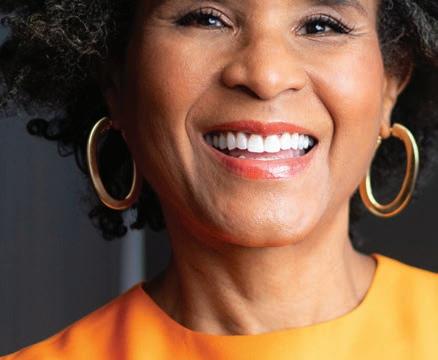

















APPROXIMATELY
75% of Dr. Ken Johnson’s patients at the Balanced Vitality Institute for Cellular Health and Longevity in Dallas are women. Dr. Johnson says he opened the functional medicine clinic six years ago because he felt like traditional medicine for women was faulty in some ways. He should know, as he has been practicing interventional cardiology for 24 years. “We (doctors) weren’t always taught to go to the root cause of a problem,” he says. “The process was to find the abnormality and start patients on a pill, at least in cardiology. I have always been more interested in disease prevention from the beginning. Functional medicine sets out to answer the ‘why.’”














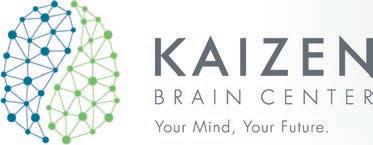
Te SAINT (Stanford Accelerated Intelligent Neuromodulation Treatment) neuromodulation system delivers an FDA-cleared MRI-guided theta-burst stimulation for the treatment of major depressive disorder.
Kaizen Brain Center is one of the frst sites in the nation to ofer this innovative treatment.



















Dr. Johnson helps his patients reverse their biological age with functional medicine, focusing on the body’s metabolic function to slow the aging process and prevent disease proactively. “It all starts at the diagnostic level,” he says. “We have genetic tests now that can tell the difference between chronological age and biological age. Then, we have therapies to address each patient’s individual needs based on those findings.”
Dr. Johnson says the most soughtafter service among women at his clinic is hormone balance. Not surprisingly, he takes a different approach. “Most people think hormones only involve estrogen and testosterone,” he says. “If you only test sex hormones, and no

other hormones from the adrenal or pituitary glands, a patient may not feel or get any better because the big picture has been missed. We need to make sure the hormone axes are communicating with each other. We need to get away from the 1970s view that testosterone is male, and estrogen is female. There is a disconnect that shouldn’t be there.”
Beyond hormone therapy, Dr. Johnson’s clinic offers novel treatments, such as ozone infusions for antiaging and other functional medicine applications, exosome and stem cell therapy as powerful weapons against disease processes, peptides for maximum cellular function, nutraceuticals, and aesthetic treatments.
John L. Burns Jr. M.D., F.A.C.S.

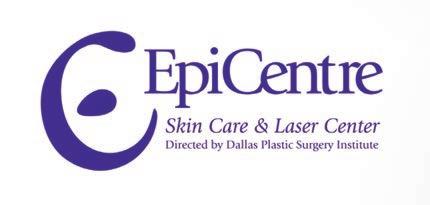










it comes to women and cancer, breast cancer often comes to mind first. And for good reason, as it remains the most common type of cancer in women. However, skin cancer, colorectal cancer, and lung cancer follow closely behind in statistics and often have a later-stage diagnosis because the symptoms are less noticeable and there is less emphasis on screening. Some cancers, such as ovarian cancer, have no definitive screening available—another reason for a late-stage diagnosis.
Dr. Jayanthi Lea, a board-certified gynecologic oncologist with UT Southwestern Medical Center, is adamant about emphasizing early detection with her patients for cancers that commonly affect women because an early detection means a greater likelihood for a cure. “I hear daily so many stories about how they wish they had seen their physician early and paid closer attention to symptoms,” Dr. Lea says.
Most of Dr. Lea’s patients are age 40 and older and are referred to her for surgery after being diagnosed with various stages of gynecologic cancer. Through the years, she has been encouraged by the advances in treatments and improved surgical techniques.
“There are 4 million survivors of breast cancer in the U.S. today. Women are living, surviving, and thriving after a breast cancer diagnosis due to early detection.”
DR. DANIELLE L. JACOBBE, TEXAS ONCOLOGY

“What we could at one time only accomplish with traditional surgery, we can now do with robotic surgery,” she says. “Surgery for endometrial and ovarian cancer can take place through small incisions on the abdomen and patients can go home the same or next day. And when surgery is combined with chemotherapy and immunotherapy, a patient’s lifespan can be prolonged.”
Genetic testing for cancer has also made a difference for women, she says, so they can make informed choices about their care going forward. “For some patients with a genetic predisposition to cancer, we can offer an inhibitor that reduces the chance of the cancer coming back,” Dr. Lea says. “We have made huge strides in genetic testing and other preventive measures. Even an ounce of prevention is better for a patient than facing or fighting cancer.”
Dr. Sarah Stringfield and Dr. Katerina Wells with Baylor Scott & White North Texas Colon and Rectal Associates are glad to see the increased attention in mainstream and social media placed on colon cancer screening as well as treatment for pelvic floor disorders. These are health issues women don’t always like to discuss, but when symptoms are ignored, the results can be deadly.
“Generations of women have dealt with issues, such as constipation, incontinence, and pelvic pain, on their own and assumed it is just what happens when you get older or after having a baby,” Dr. Wells says. “There should never be a point for a woman where function is a detractor to their quality of life. Women deserve therapy for these issues and at least some conversation about them.”
Dr. Wells and Dr. Stringfield collaborate with a multidisciplinary team of urogynecologists to address the treatment of pelvic floor disorders with medication and surgery, rounded out by counseling and nutrition. “Pelvic floor disorders are understudied, and it’s dif f icult for women to f ind specialists in this f ield,” Dr. Wells says. “Urinary and stool irregularities or pain with intercourse aren’t necessarily what women want to discuss with their friends over coffee, but it’s important for women to realize this is common across the female population.”
Dr. String f ield urges her patients to pay attention to any irregularity in their bowel habits or in their stool, as changes may indicate colon cancer. “There has been a higher rate of younger people getting diagnosed with colon cancer,” she says. “Colonoscopy is the only exam that is both a screening and preventive, as it can remove polyps when they are small before they become cancer, but there are other noninvasive screening options.”
Current guidelines recommend that people of average risk for colon cancer get a colonoscopy at age 45, and at age 40 or younger if there is a family history. “Women tend to have more constipation than men, so they may not recognize changes as soon as someone with a different baseline functional status,” Dr. Stringfield says. “So many women tell me they have had symptoms for years before they decided to talk to their doctor about it. They think it’s just life and don’t seek help, but no one needs to put up with concerning or painful symptoms that are abnormal. There are things we can do to improve your quality of life.”
Regarding breast cancer, prior to April 2024 , the U.S. Preventive Services Task Force recommended women start getting annual mammograms starting at age 50 , every other year. Now, the recommendation is to begin mammography screening at age 40 , every other year. Dr. Danielle L. Jacobbe, a breast surgical oncologist with Texas Oncology, says the original recommendation for age 50 was because women’s anxiety levels were increased when there was a false positive result. “After some research, it was determined that anxiety was negligible and patients would rather know if something were going on,” she says. “More women are getting diagnosed with breast cancer under age 50 , so from that standpoint, earlier screening is necessary. Age 40 and yearly will always be the recommendation I make to my patients. Some women with higher risk for breast cancer begin screening earlier than age 40.”
If a woman is diagnosed with breast cancer, there is more hope than ever for a cure thanks to early detection and the latest treatment options. Dr. Jacobbe has always been a proponent for breast
conservation when it is safe, but it isn’t the right option for every woman. “The surgery plan is part of a shared decisionmaking process between the patient and surgeon. Many factors go into making the decision,” she says. “Ultimately, patients need to advocate for themselves and know their options.”
Texas Center for Proton Therapy offers hope to patients with breast cancer through proton therapy, which delivers high doses of radiation directly to tumors, reducing recurrence rates and side effects for many breast cancer cases. Breast cancer occurs in a sensitive area of the body with several nearby organs, and proton therapy for breast cancer involves targeted proton beams that can deliver high doses of radiation to destroy cancerous cells. The precise treatment minimizes exposure to the heart, lungs, and healthy tissue near the breast.
“We have known for a long time that all women who get radiation therapy for breast cancer are at some risk of
developing heart problems, but the risk is almost always worth taking because the benefits are quite significant,” says Dr. Jared Sturgeon, a radiation oncologist with Texas Center for Proton Therapy. “The opportunity for proton therapy to dramatically reduce a breast cancer recurrence is most often worth the very small risk of heart issues.”
Dr. Sturgeon says proton therapy for left-side breast cancer has been proven to be effective and safe for breast cancer patients. Younger women with breast cancer are typically the best candidates. “In general, there are very few women with breast cancer who wouldn’t bene f it from proton therapy,” he says. “We have seen great outcomes with the highest rate of disease control and survival rate without the downside of toxicity. Many women are concerned they need a special referral for proton therapy, but any woman interested in the benefits of this treatment can contact us directly for a discussion.”

Our team specializes in colon and rectal surgical care that fts your needs as a woman and takes a comprehensive approach to caring for you.
From infammatory bowel disease, such as ulcerative colitis and Crohn’s disease, to pelvic foor dysfunction, to cancer, we’ll partner with you to plan the best path forward. Using a multidisciplinary approach, our surgeons will create a treatment plan customized to you.
For most women, it seems like the signs of aging show up all the sudden, seemingly overnight. That’s when antiaging becomes a game of chasing lines and wrinkles.
“There is a window of time up until about age 45 that you can somewhat maintain a youthful appearance with Botox, fillers, and lasers, but at a certain point, gravity wins the day,” says Dallas plastic surgeon, Dr. John Burns. “At this point, you start throwing good money after bad with noninvasive options. The most effective result is a facelift.”
Having facelift surgery can seem intimidating—after all, the surgery is performed on a part of the body that is seen every day. This is why it is important to choose an experienced, boardcertified plastic surgeon that uses the latest facelift surgery techniques for the procedures. According to Dr. Burns, a successful
facelift is one that is natural-looking with a refreshed appearance— not the windswept look that facelifts were known for decades ago.
“Patients are concerned with looking overdone or fake, and they are concerned about scaring,” Dr. Burns says. “The way to avoid this is by addressing the inner layer of the face with a deep-plane facelift. By tightening the inside layer, the result looks more natural. The second component is to fill the face with fat for a more youthful appearance. This is the modern, 3D approach to facelifts.”
Ready for a refresh?
Consider the following when looking for a facelift surgeon.
Choose a surgeon with privileges at a fully accredited surgery center with a board-certified anesthesiologist on staff.
Ask your surgeon for recent beforeand-after photos of patients.
Ask if your surgeon offers postsurgical medication for less bruising and faster recovery.
Choose a surgeon with a thorough after-care program with access to innovative skincare treatments and services to maintain your results.

Although many women have their first facelift at age 50, and a second at 70, Dr. Burns is noticing an interest from younger patients as well. “People think they should wait, but what I most often hear is that they wish they had done this sooner,” he says.





















































